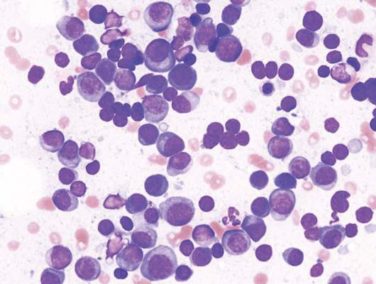FROM THE JOURNAL OF CLINICAL ONCOLOGY
The most recent update of the American Society of Clinical Oncology and College of American Pathologists (ASCO-CAP) guidelines for interpreting HER2 diagnostic assays affected about 5% of breast cancer patients in three large clinical trials, researchers reported in the Journal of Clinical Oncology.
Although this is “a small minority of patients,” clinical correlates fail to support three of the five groups of patients that the updated guidelines designated based on HER2 FISH [fluorescent in situ hybridization] ratio and average number of HER2 gene copies per tumor cell, said Michael Press, MD, of the University of Southern California Norris Comprehensive Cancer Center, Los Angeles, and his associates.
“Our findings support the original categorizations of HER2 by FISH status in BCIRG [Breast Cancer International Research Group]/Translational Research in Oncology trials,” they said.
The most recent ASCO-CAP guidelines differ from Food and Drug Administration–approved package inserts for HER2 FISH companion diagnostic assays, which reflect the criteria used in clinical trials of the BCIRG/Translational Research in Oncology (TRIO) and previous (2007) ASCO-CAP guidelines, the researchers noted. In particular, the updated guidelines split patients into group 1 (in situ hybridization [ISH] positive, with a HER2-to-chromosome 17 centromere ratio of at least 2.0 and an average of at least four copies of the HER2 gene per tumor cell), group 2 (ISH positive, with a ratio of at least 2.0 and less than four HER2 gene copies), group 3 (ISH positive, with a ratio of less than 2.0 and at least six gene copies), group 4 (ISH equivocal, with a ratio of less than 2.0 and at least four but fewer than six gene copies), and group 5 (ISH negative, a ratio of less than 2.0 and fewer than four gene copies).
The researchers retrospectively analyzed detailed outcomes data from the BCIRG-005, BCIRG- 006, and BCIRG-007 clinical trials, which “now have long-term clinical follow-up data available that facilitate determination of whether the new HER2 guidelines for FISH are clinically useful and predictive of known outcomes,” they said.
The investigators counted cases in each of the five groups and looked to see if these groups correlated with the clinical implications of HER2 gene amplification, such as overexpression of HER2 protein and worse disease-free and overall survival without HER2 targeted therapy (J Clin Oncol. 2016 Aug 29. doi: 10.1200/JCO.2016.66.6693).
Among 10,468 patients in these trials, the vast majority fell into group 1 (41%) or 5 (54%), while 0.7% were in group 2, 0.5% were in group 3, and 4% were in group 4. HER2 amplification status did not change for most patients because the updated guidelines did not affect group 1 (amplified) or group 5 (not amplified). But groups 2 and 4, which the guidelines respectively designated as ISH positive and ISH equivocal, actually seemed to be HER2 not amplified, as neither group was associated with HER2 protein overexpression, group 2 showed a lack of response to trastuzumab therapy, and patients in group 4 who received only chemotherapy had a prognosis similar to that of group 5 in terms of disease-free and overall survival, the researchers reported.
“Overall, we observe approximately 99.3% agreement with initial FDA-approved guidelines and 94.7% agreement with current ASCO-CAP guidelines,” they wrote. “The 4.6% differential is related to only two groups, groups 3 and 4, introduced by ASCO-CAP that lead to different assessments of HER2 status, compared with FDA criteria. Finally, our observations indicate group 2, which represents 0.7% of breast cancers, is misclassified by both the FDA and ASCO-CAP guidelines as amplified and ISH positive.”
They also found that patients in group 3, which the guidelines designated as ISH positive, actually had both HER2 amplified and HER2 not-amplified breast cancers. “There are now nearly 3 decades of accumulated experience and published data studying this alteration in human breast cancers,” the investigators concluded. “Although guidelines are helpful, diagnostic judgment and long-term outcome data remain important in the evaluation of testing criteria.”






